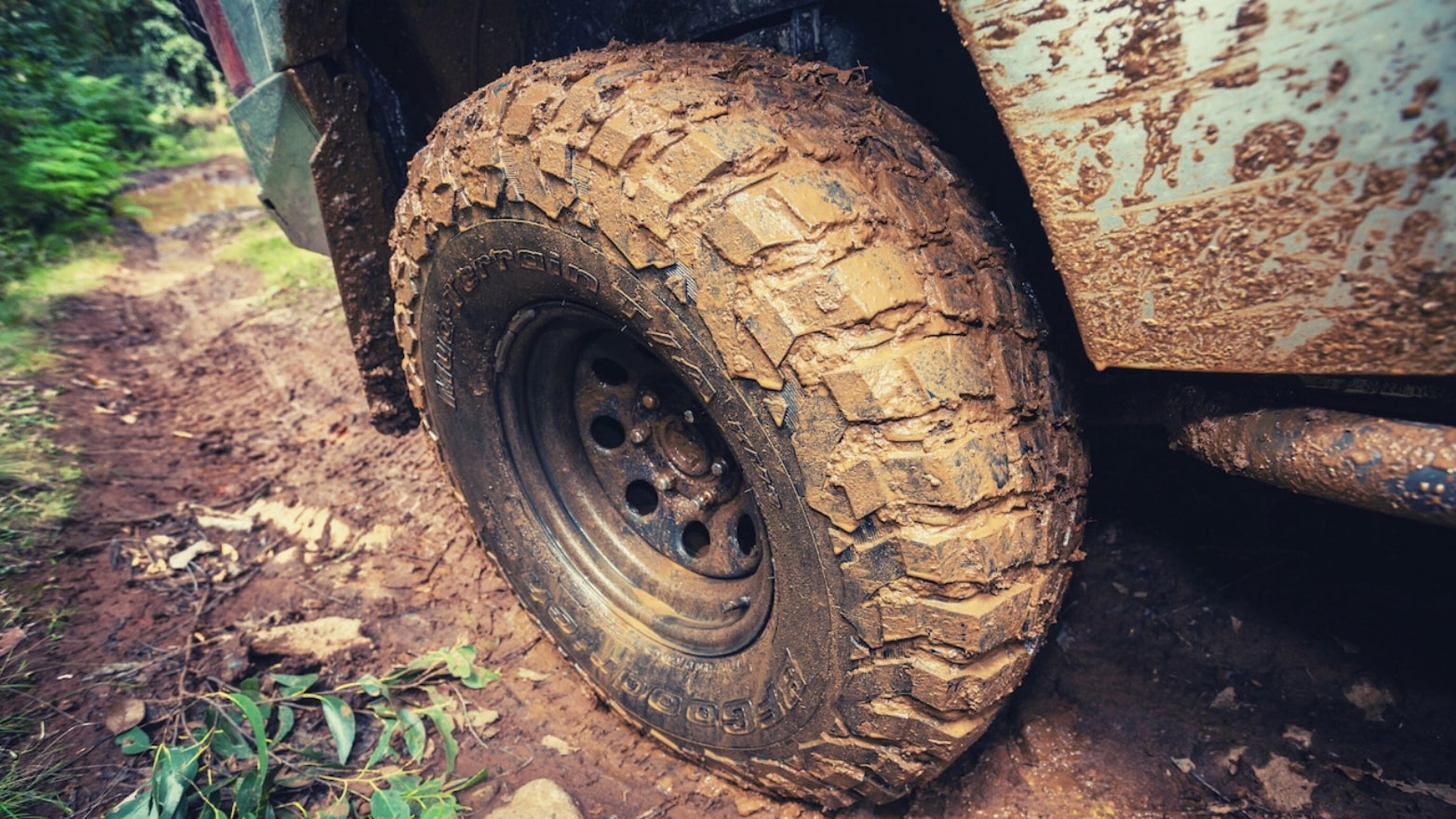Advertisement
Advertisement
In How To Mud Driving Part 1 we discussed why you should avoid mud if at all possible and in How To Mud Driving Part 2 we examined the different types of mud you’re likely to encounter when four-wheel driving. Of course, you can’t always avoid mud, so now we’ll look at the best ways to get ready drive through the mucky stuff.
Check out the mud
The first thing you’ll want to do when confronted with a muddy section of track is to check out how long it is so you can figure out an escape plan if you get stuck. You’ll need to feel the mud so you can figure out its consistency, and have a poke around with a long stick to find out how deep it is. If you can, try walking through the mud to check depth – if it sucks the boot right off your foot when you try to extract it, it’s probably going to be a power-struggle to get your 4×4 through it.
While walking through the mud might not sound like a hell of a lot of fun, sometimes it’s the best option. Unlike clear water, you never know what’s lurking beneath the surface when it comes to mud, so as well as checking the depth, have a feel for obstacles that could cause a problem when you drive through, such as rocks and logs. This walk will also provide you with the opportunity to feel if there’s a firm base beneath the upper layer of mud and, if so, how deep it is. This is important, as there is a different technique for driving through mud with a firm base to driving through mud that seems as though it’s bottomless, but we’ll get to that later.

Vehicle set-up
It’s when you’re faced with mud that you’ll be pleased you put up with those noisy mud-terrain tyres for all those road miles. Muddies have wide open tread blocks that allow them to gain purchase in slippery mud, as well as to more easily eject mud as they rotate. If your vehicle is equipped with muddies it’ll obviously perform better in mud, but if it’s wearing all-terrains, or even highway terrain tyres, all is not lost…
Lowering your tyre pressures will have a big impact on how your vehicle will perform in mud. Don’t drop them as low as you would when driving in sand or you might end up with mud working its way in between the wheels and the tyres, which could lead to rapid tyre deflation. Depending on how much weight your vehicle is carrying, dropping from road pressures to between 22-28psi can be enough to provide a longer footprint to help your vehicle work its way through thick mud. If there’s a solid base beneath the top layer of mud, however, you can leave pressures higher as the tyres will more easily cut through that top layer to gain traction on the solid base.

If you’re not sure if you’ll make it through the muddy section, make sure you’re prepared. If you’re travelling with other vehicles, have your snatch strap/recovery rope ready; if you’re on your own, make sure your recovery tracks are in an easily accessible spot; know where your winch controller is and get your winch recovery kit ready; and as mentioned, look for easy exit points, as well as something to winch off.
Depending on what off-road armoury your vehicle is equipped with, make sure you have everything set to give you the best chance of making it through the muddy section of track. For example, if you drive a new vehicle with driver selectable modes, make sure you engage the ‘mud and ruts’ program, or whatever the equivalent setting is in your vehicle. If you have a vehicle equipped with diff locks, make sure you engage them… but bear in mind that engaging the front diff lock can make steering more difficult.
If you reckon the mud is going to be a hard slog, engage low-range to give you the best chance of powering through, but don’t select too low a gear or you won’t have enough momentum and you may end up with all four wheels spinning uselessly while you go nowhere.
Oh, and in part-time 4x4s, don’t forget to engage four-wheel drive and, if fitted, remember to lock your free-wheeling hubs. Sounds obvious, but we all forget the basics sometimes.
Helpful accessories
If you haven’t already modified your vehicle, there are a few key mods that can help when driving in mud. The most obvious is the aforementioned mud-terrain tyres, but a suspension lift can also be beneficial. A lift will provide more ground clearance so you’ll be able to drive further and deeper before bottoming out; in most states you can go up by 75mm (50mm suspension lift and 25mm increase from larger tyres) but go any higher and your vehicle will need to be engineered.

For deep mud, a snorkel and extensions with one-way breathers for the diffs, gearbox and transfer case are a great idea.
Easily accessible recovery points should be fitted in case you get into strife, and a winch could be a lifesaver if you’re travelling solo. Oh, and while two recovery tracks will also help if you get stuck, four would be even better.
Other stuff to think about? Decent mud flaps front and rear, good underbody protection plates, adequate wheel-arch flares, plenty of water in your windscreen-washer bottle, water-resistant seat covers and quality rubber floor mats with raised edges.

What’s next?
In How To: Mud Driving Part 4 we’ll discuss mud-driving techniques and explain what to do if you get into strife.